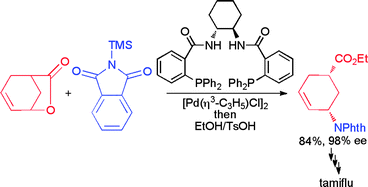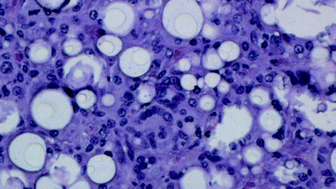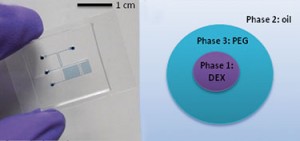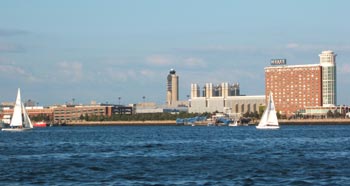This month sees the following articles in Chemical Science that are in the top ten most accessed:-
Asymmetric Bronsted acid catalysis in aqueous solution
Magnus Rueping and Thomas Theissmann
Chem. Sci., 2010, 1, 473 – 476, DOI: 10.1039/c0sc00206b
Oxygen reduction reactivity of cobalt(ii) hangman porphyrins
Robert McGuire Jr., Dilek K. Dogutan, Thomas S. Teets, Jin Suntivich, Yang Shao-Horn and Daniel G. Nocera
Chem. Sci., 2010, 1, 411 – 414, DOI: 10.1039/c0sc00281j
Supramolecular hydrogel capsule showing prostate specific antigen-responsive function for sensing and targeting prostate cancer cells
Masato Ikeda, Rika Ochi, Atsuhiko Wada and Itaru Hamachi
Chem. Sci., 2010, 1, 491 – 498, DOI: 10.1039/c0sc00278j
Total synthesis of all (-)-agelastatin alkaloids
Mohammad Movassaghi, Dustin S. Siegel and Sunkyu Han
Chem. Sci., 2010, DOI: 10.1039/c0sc00351d
Pd-catalyzed ortho-arylation of phenylacetamides, benzamides, and anilides with simple arenes using sodium persulfate
Charles S. Yeung, Xiaodan Zhao, Nadine Borduas and Vy M. Dong
Chem. Sci., 2010, 1, 331 – 336, DOI: 10.1039/c0sc00231c
Synthesis enables a structural revision of the Mycobacterium tuberculosis-produced diterpene, edaxadiene
Jillian E. Spangler, Cheryl A. Carson and Erik J. Sorensen
Chem. Sci., 2010, 1, 202 – 205, DOI: 10.1039/c0sc00284d
DNA fluorocode: A single molecule, optical map of DNA with nanometre resolution
Robert K. Neely, Peter Dedecker, Jun-ichi Hotta, Giedr Urbanaviit, Saulius Klimaauskas and Johan Hofkens
Chem. Sci., 2010, 1, 453 – 460, DOI: 10.1039/c0sc00277a
Diamine ligands in copper-catalyzed reactions
David S. Surry and Stephen L. Buchwald
Chem. Sci., 2010, 1, 13 – 31, DOI: 10.1039/c0sc00107d, Perspective
The organocatalytic three-step total synthesis of (+)-frondosin B
Maud Reiter, Staffan Torssell, Sandra Lee and David W. C. MacMillan
Chem. Sci., 2010, 1, 37 – 42, DOI: 10.1039/c0sc00204f
Direct observation of CuI/CuIII redox steps relevant to Ullmann-type coupling reactions
Alicia Casitas, Amanda E. King, Teodor Parella, Miquel Costas, Shannon S. Stahl and Xavi Ribas
Chem. Sci., 2010, 1, 326 – 330, DOI: 10.1039/c0sc00245c
Why not take a look at the articles today and blog your thoughts and comments below.
Fancy submitting an article to Chemical Science? Then why not submit to us today or alternatively email us your suggestions.

















